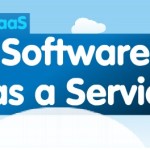SaaS steps on the gas for consumer bonhomie

Software-as-a-Service (SaaS) is changing the relationship between software providers and their customers. Vendors and customers are gradually designing and building software products and services more collaboratively—even mission-critical business applications like ERP.
That would have been impossible a few years ago. Of course, a software company’s biggest customers have always had some say in ideating new features and changes. But those ideas were typically thrown over the wall to the vendor’s development team, and only after months or years—and with a lot of luck and deployment effort—would the customer get the newer functionality. Since then, things have transformed.
At the beginning, when SaaS just referred to hosting software in the cloud, software vendors regarded it as simply a novel way of delivering software to customers. On the customer side, shifting the accountability (and resources) for hosting and maintaining the software was respected on its own. But since then, the SaaS model, and cloud computing more generally, has generated a new resurgence for development. Software built on the cloud is quicker to develop and deploy than legacy software. It also has built-in mobile, global, and social competences. It is typically easier to use than legacy software, and there is no longer a necessity for costly and time-consuming updates.
While cloud software is easier to deploy than legacy systems, large enterprises likely won’t “rip-and-replace” critical business software overnight. However, they aren’t essentially locked into multi-year contracts either, so SaaS vendors must keep customers involved in a continual courtship, and be receptive to their needs. Customers know it’s now possible for vendors to deploy modern features and services in a matter of weeks or months, not years. So when they ask vendors what they want to see in the product, they expect their recommended changes to be added to the roadmap.
“What cloud does, and specifically Software-as-a-Service cloud does, is create a real partnership where you’re both associated to the success of the project,” said an industry expert. “That’s a relatively new shift in the industry that’s changing the probabilities of success for many of these projects.”
And there are many ways this plays out between SaaS vendors and customers. Clients may request relatively minor features, such as additional reporting capabilities, or major features, such as localization for a specific country. The vendor may respond by saying that the additional reporting will be available in the next update, but the localization will have to wait. In this case, the SaaS model can provide a paradigm for dialogue and compromise.
Vendors now may not even wait for their customers to approach them with requests. Increasingly, they are monitoring and engaging their customers in online communities. These forums enable customers to network with other users to share best practices and ideas to get more from the software, and vendors can gain valuable insight into potential issues or opportunities to provide new functionality—even before the customer asks.
SaaS companies still know more about software development, and customers still know more about their own business needs. What’s new is that the onus to achieve success is no longer the responsibility of one party. Both parties are increasingly acting in partnership, crossing back and forth over the traditional lines that divided customer from vendor to play on the same team. With the power of the cloud behind them, SaaS companies can be more responsive than ever before, bringing new features and updates seamlessly to the customers who need them.
2014 © Confluo. ALL Rights Reserved. Privacy Policy





